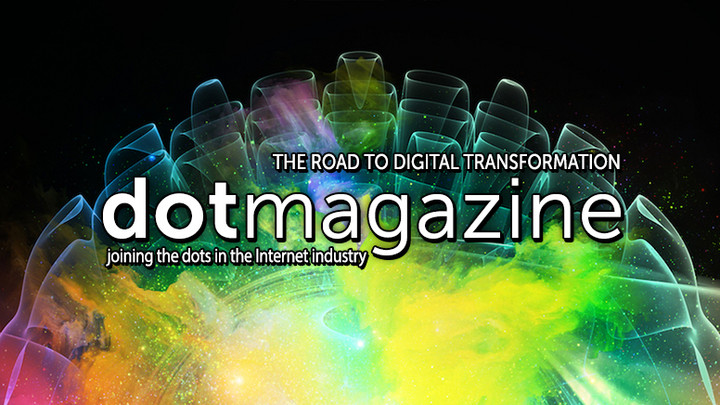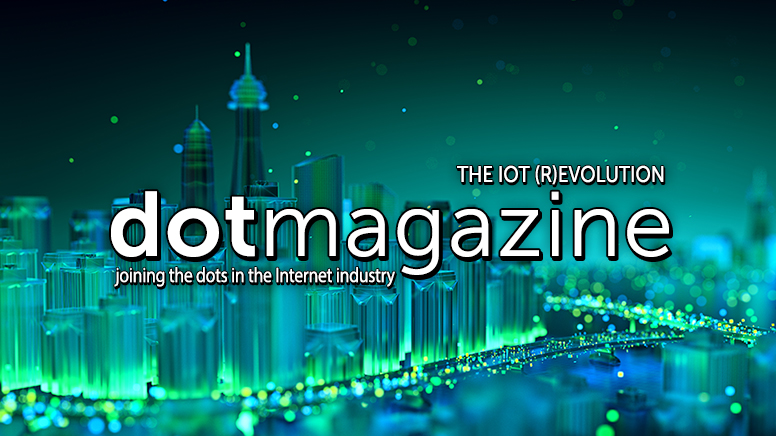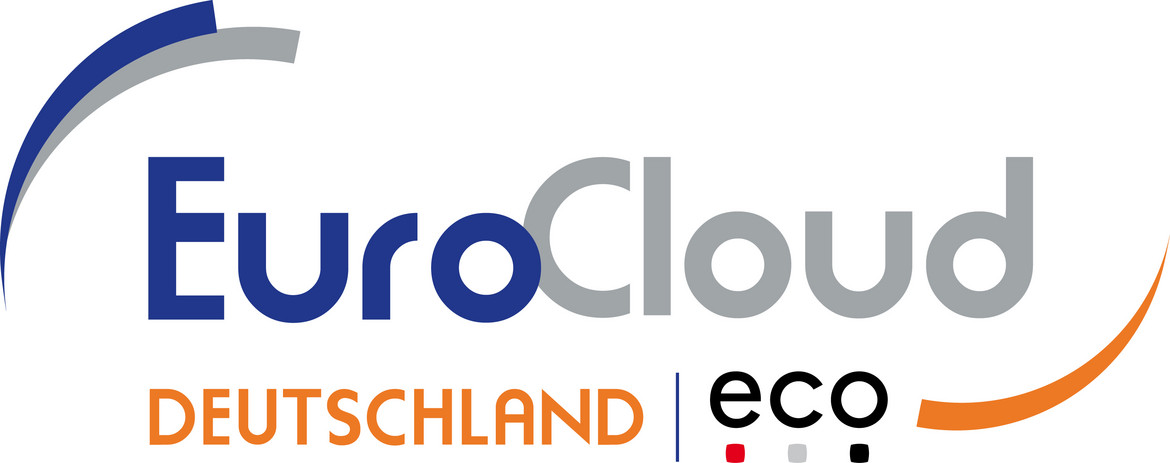doteditorial: The Digital Transformation Journey
Digital transformation is a journey which can result in disruption and cultural change. The key is to navigate it so that these changes are accepted and wanted by those affected. Andreas Weiss from the eco Association explores the challenges of making companies digital.

© agsandrew | istockphoto.com
The concept of digital transformation as I would define it relates principally to organizational change. It entails how organizations are transforming themselves in order to be prepared for the changes caused by emerging technologies like Cloud, Mobile, Big Data, AI, and IoT, for example. These new technologies and new service models can influence the way we work in our known environments. Digital transformation, then, is the first chapter in the story of digitalization.
Digital transformation is evolutionary in nature. As a result, when we talk about digital transformation, we also have to recognize and understand digital disruption. Disruptive new business models have been emerging in the last few years which do not entail investment into any production facilities, hardware, and so on: Instead, they make use of the ecosystem which is out there and optimize it via scalable digital platforms and services. These companies have a head start on the road to becoming truly digital.
One of our current challenges is to balance the old and the new, to allow companies that have not yet or only recently embarked on the journey to digitalization to accomplish this transformation. On the face of it, the change may be seen to be just about optimizing processes and employing new technologies.
But as the word “transformation” implies, it goes much deeper than this, because it is also about company culture, personal attitudes of workers, and the evolving socio-cultural context.
Digital disruption in communication
Communication is a good entry point to help us to identify the distinction between digital transformation and digital disruption. Because when you think about it, when did you last pick up your landline phone to call a friend? Sure, if it’s somebody we haven’t met for a while, we might choose to use a conventional phone to have a long catch-up. But in the vast majority of cases, we meet our friends or we chat with them via various apps. Now, instead of just typing words into the chat, we also have the new option of voice messages. And while each individual communication might seem insignificant in its own right, when these are undertaken on a widespread basis, then we are embarking on a new style of interaction on a large scale. Some people are worried about these developments; some like them: if the latter outnumber the former, then we can start to wave goodbye to the telephone as we have known it.
It could be that this happens first in our private lives, and then only later emerges as company communication. Here, we can make use of Voice over IP (VoIP) and web sharing, we use collaboration services, messengers, etc. We also use enterprise content management and back-end services to exchange information, to bring them into a context, to make them available for groups who are working together – and the list goes on. So, we have a range of activities which can be seen through the lens of digital transformation – simply by introducing new services and optimizing processes. And such transformation can pave the way for disruption. The technology WebRTC (which stands for Web-Based Real-Time Communication), for example, is predicted to have 500 million business users by 2019, a forecast expanded upon in the EuroCloud Deutschland_eco study, WebRTC in Germany: Facts and Trends. This would herald a revolution in communication, overturning the way we interact with colleagues, and the devices we use to do this.
But it’s not only about communication with colleagues and partners – the way we communicate with customers is also evolving. Email is a case in point for digital evolution. Far from being on its deathbed, as Marcel Becker from Oath tells us, “The future of email is tools which use email as a data storage, but the actual experience doesn’t look like email anymore”. Christian Hanke from Edenspiekermann explains that the power of email resides in its capacity for personalization of communication, and offers a first step into a relationship and a foundation for further brand experiences. Outside of the email ecosystem, Lucie Poisson from 1&1 also explores how digital transformation “has allowed interaction with the audience to be successfully customized and has built a meaningful bridge between offline and online communications”. And when that customer communication is successful enough to go viral, then it’s important to have a scalable web presence to cope with the sudden rise in visitors, Markus Krenn from arvato Systems explains.
Cultural change from digital transformation
And when we look at the full package, what is the result? The outcome is we are becoming more flexible, not just about how we work, but about where we work. We are no longer bound to the workplace at a company. We can make use of any device which can run browser technologies – smartphones, tablets, and PCs. Managing this flexible interaction through Presence Management is the ensuing challenge for the new mobile workforce – something which Detlev Artelt, CEO of aixvox and Leader of the EuroCloud Competence Group Business Communications, provides advice on.
So we get access from anywhere in the world to relevant company information and business information, and have a range of options for our IT infrastructure, the alternatives of which are explored by Marc Fröse from Etix Everywhere. All of this introduces a previously undreamt-of level of flexibility. Of course, this would not be possible without making use of cloud services. As Wally MacDermid from Scality explains, the challenge here is to manage the multiplicity of cloud services that a company may need – and to do this in a way that ensures compliance with data protection regulations. Equally, Jos Bischoff from BCT offers advice on the value of an enterprise information management platform (EIM) to ensure professionals get access to the information they need, without the limitations of a silo structure. Ultimately, using services such as these and a multitude of others which are introduced by digital transformation, we witness some disruption. We experience, consciously or unconsciously, a change in our cultural and interpersonal behavior.
To step briefly outside of the office, let’s look at our homes for a moment: here we are availing of speech assistants, we are making use of streaming services, we want to have metering and closed-looped control. And then look at how we live in urban areas. The indications are already there that we will experience major changes through the transformation to smart cities. There are many issues that can be resolved through this – problems with pollution, problems with congested roads, lack of parking, to name just a few. We urgently need new mobility concepts.
So, we have these indicators of cultural change in our homes, in our social behavior, in our urban living, and we already see that our workplaces in the future will also change. The change has started already and we all need the skills to keep up.
Getting buy-in from the workforce to enable digital transformation
To bring this back to the workplace: In considering the hurdles and obstacles to moving forward with digital transformation, the need for skills-sets also plays a critical role. Because if a company decides to modernize, and use these fancy new technologies, then the next questions are: Who is able to perform these changes? What is the buy-in of your workforce? How can you mobilize them? Because they might perceive the situation as follows: “Yes, we have to change, but what is the outcome of change for me in this package?” And this understandable sense of insecurity is one of the obstacles with which we are confronted. Perhaps the workforce doesn't have the right skills. Or they do not know the direction to take or how the various strands are interacting. And on the other side, things are moving so fast that they are overwhelmed by the changes.
The job specification of today might not exist in the next five years. There will be other descriptions incorporating responsibilities which are needed to move forward with the usage of these technologies. We have a career change society.
Taking the challenge to go digital
Looking at those companies that have embraced new disruptive business models, we can see a path forward. Look at Microsoft: they made a turnaround in just three years from a software delivery company to a full cloud service delivery company. This is a monumental change. But they did it without pausing to look left and right. They just agreed that was the direction and “off we go” – and everyone else is now moving in this direction. So, it’s possible, but there are certainly risks involved, and you need to have everyone working towards the same goal.
Large IT companies with deep pockets are capable of transformation, but where does that leave small or medium to large-sized companies from other industries? They might already be partially digital in their workplaces, but they need to take the next step. For this, they have two perspectives they need to explore. One is the internal view: How do we make ourselves fit for the new digital area? And the second is: How can we participate in the value chain of the future with our services and products? The answer to both questions resides in new digital business models, which don’t just require technological investments, but also necessitate a rethink of human resource and value chain strategies.
Certainly, new digital business models are accompanied by a couple of pain points for companies. One of them is regulation, in terms of how to manage the requirements which are stipulated by the government when it comes to digital services, especially in the area of data privacy. There's still a lot of uncertainty here for companies. And the other thorny issue is overcoming the mental hurdle of making use of cloud services in general, which means handing over what were formerly seen as critical IT services to a third party. This is really a big step for most companies. Because they need to understand the issues of data sovereignty, security and so on. But if you don't take the steps to the cloud, you won't make the step to the digital world. The cloud is essential. It's a core service model to make use of all these on-top services like Big Data, industrial IoT services, and Artificial Intelligence.
A new approach to IT security for digital transformation
As already intimated, something that we cannot avoid dealing with on the topic of digital transformation is security. As Nikolei Steinhage from Fidelis argues in interview with dotmagazine, prevention is no longer enough when it comes to security, while Markus Schaffrin from eco explains how a whole-company approach is required to deal with this issue - a topic taken up by Dr. Niklas Hellemann from SoSafe Cyber Security Awareness, who looks at the importance of employee engagement in prevention, defense, and detection. I think the key message here is that in the past when we talked about security and data security, it was mostly related to having appropriate perimeters – meaning that the data of the company was secured by firewalls or special networks which protected it against external access. Now, with the usage of cloud and other services, we are moving relevant data into the Internet, which means we have a less controlled environment in terms of perimeter. This doesn't mean that the data are not secure, but we need new approaches. And the clear shift is that we move from a more perimeter-centric security consideration to an identity-centric security consideration. This means that people who have access to relevant information need to be identified: We need identity management, we need permission management, and we need capabilities to monitor who is accessing which type of data according to his or her identity, and whether he or she is allowed to access this information or not.
This is a completely different approach and is certainly quite challenging alongside all the other cyber security threats. But it doesn't make sense to try to keep old structures in this new environment. We must face this challenge and we need to deal with it. And there are still some people who, as they don’t feel themselves capable of seeing all these dimensions, try to keep their data in what they see as the safest environment. But then they’re excluding themselves from all these digital opportunities. The message here is: “Accept the challenge when it comes to security, get familiar with the issues, and at the end of the day, engage in a risk assessment”. Not every piece of data is of such high value that it makes sense to keep it in a highly protected environment. Ultimately, it is important to find the balance between security and innovation, a point elaborated upon by Karsten Nohl from Security Research Labs. And while this may initially appear to represent a conflicting challenge for company CIOs, according to Jack Miller, CISO at Open Systems, it is possible to both reduce costs and increase agility, and at the same time ensure security and compliance.
Cooperative ecosystems key to success in the digital world
To support the industry in the process of digital transformation, with all the opportunities and challenges that come with it, the eco Association has established the new business unit Digital Business Models. Here, our recent studies on the smart home, smart city, and industrial IoT markets have already proved revealing. What became evident in these studies is that participating in the digital value chain of the future – a value chain underpinned by core aspects such as security – will be a joint activity. Because there is no company that has the capacity to provide everything from a single source. There are certainly companies that provide a great deal of services and solutions such as, for example, Amazon and Deutsche Telekom in the smart home sector, or Cisco and Hewlett Packard in the smart city segment. Be that as it may, even these large players need to look at the value chains which are served by various players in the market, and they must interact to provide those services which society and the market demand.
Looked at from this angle, the process of digital transformation can be viewed as a series of concentric collaborative circles. Firstly, within business, a whole-company approach and workforce buy-in is required with a view to ensure a marrying of innovation and security. Secondly, new digital business models require interdependent value chains involving a wide array of stakeholders who must cooperate to deliver a product end-to-end. And ultimately, everyone is a stakeholder in digital transformation, and everyone can participate in the global discussions and negotiations on Internet governance, to help shape the world we want. On this theme, Michael Rotert, Honorary President of the eco Association, explains how each of us can have a voice in global Internet governance discussions in order to help define the digital world of the future.
Andreas Weiss is Director of the cloud association EuroCloud Deutschland_eco e.V. since its foundation and has been active within eco since 1998. He played a key role in developing the EuroCloud Star Audit as the first cloud-specific auditing process and is part of various research and SME supporting projects like NGCert (Next Generation Certification) and Trusted Cloud. He is the co-author of both the book “Cloud Migration”, dealing with issues of quality requirements and selection criteria, and the EuroCloud Guidelines "Cloud Computing – Law, Data Protection & Compliance”, as well as the Cloud Acceptance Study. He has recently been appointed Director of Digital Business Models in eco – Association of the Internet Industry.






